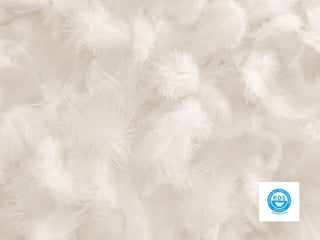During the winter months, it becomes increasingly important to stay warm. A variety of options, such as space heaters and electric blankets, are designed to keep us toasty. These options, while effective, are rarely eco-friendly. However, an option exists that seamlessly combines warmth, comfort, and sustainability: down-filled bedding. Available in the form of down comforters, down blankets, down pillows, down jackets, and more, here’s a comprehensive overview of its eco-friendliness and why it’s a sustainable choice for winter months.
Understanding Down Bedding
The down bedding is a high-quality bedding option made from the under-feathers of ducks and geese and is a popular choice when it comes to duvets, pillows, and quilts. Preferred for its excellent insulation properties without the weight, down bedding is intended to be an efficient, sustainable alternative to synthetic material bedding or heating options.
Incredible Longevity
One of the primary reasons that make down bedding a sustainable option is its longevity. A down product such as a down comforter or pillow, with proper care, lasts significantly longer than other bedding types—up to 10-15 years or more. As a result of fewer replacements, less landfill waste will be generated, thereby contributing to a less detrimental environmental impact and lesser carbon footprint.
Efficient Thermal Insulation
Throughout the coldest months, down bedding’s excellent thermal insulation helps to keep a comfortable sleeping temperature. Warm air is trapped close to the body, thereby providing the necessary warmth. Likewise, its breathability promotes a healthier and more comfortable sleeping environment by dissipating excess body heat and moisture.
The Ethical Dimension: Animal Welfare
The sustainability of down bedding cannot be discussed without considering where it is sourced. Indeed, some down-sourcing practices can be harmful to the ducks and geese providing the down. To counteract this, responsible down standards (RDS) have been established. RDS certification guarantees that the down was sourced from birds that were not subjected to any unnecessary harm and had access to food, water, and outdoor living.
The Eco-Friendly Production Process
In contrast to many other bedding products, the production of down bedding is remarkably environmentally friendly. Considering that down is a byproduct of the food industry, it is critical to utilize this valuable resource instead of letting it remain unused. Processing down primarily involves cleaning the material using water and biodegradable soaps. This means fewer harmful chemicals are introduced to the ecosystem.
End of Life Management of Down Bedding
Down products continue to embody sustainability even when they reach the end of their useful lives. It is either recyclable or compostable, which reduces the amount of waste produced by down bedding. In addition, some companies offer take-back programs for old down products, which adds yet another layer of sustainability to the product’s life cycle.
Conclusion
Staying warm through the winter months need not come at a cost to the planet. Down bedding offers an effective and sustainable solution to high-energy heating options. When considering your next winter bedding purchase, keep in mind the ecological benefits and positive impact on the environment of down bedding. Remember to look for RDS-certified products to ensure that your comfort doesn’t come at the expense of animal welfare. After all, a small, conscious decision can make a substantial impact on our planet’s health. Embrace a green and eco-friendly lifestyle by choosing goose down comforters and bedding products made from eco-friendly materials.

